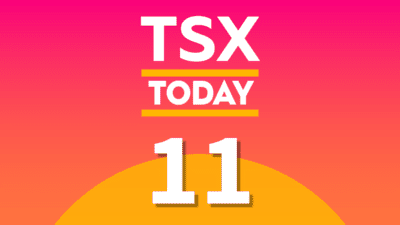The Canada Revenue Agency offers dozens of valuable tax breaks. Most aren’t available to everyone. In fact, some options exist only for a handful of industries or individuals.
Yet there’s one tax trick that is available to every Canadian adult. The data shows that it’s the most effective way to avoid paying taxes.
Surprisingly, 43% of Canadians don’t take advantage of this tax break. Even those that do rarely use it to its maximum potential.
If you want to lower your tax bill for years, or even decades to come, pay close attention.
It seems too simple
You’re likely familiar with Tax-Free Savings Accounts (TFSA). More than half of all Canadians have one. Even if you know the basics, it can pay to understand the details.
TFSAs are considered tax-advantaged savings vehicles. The tax break is built directly into the account. Simply open a TFSA, deposit money, invest the funds, and your trades automatically avoid taxes. How so?
TFSAs use post-tax money. That’s income that you’ve already been taxes on. Once the money is in the account, however, it grows tax free, forever.
Capital gains and dividends are tax free. So are withdrawals, which can be made at any time for any reason. You can deposit $1,000 into a TFSA, double its value overnight, and withdraw the profits the next day, with a tax bill totaling $0.
This tax break is slightly different than an RRSP, which is also used by roughly half the adult population. RRSPs use pre-tax money. That’s income that you haven’t paid taxes on yet.
For every $1 you contribute to an RRSP, you can deduct $1 from that year’s taxable income. You get the tax break today, but when it’s time to cash out, you’ll need to foot the bill.
While there are advantages to both vehicles, TFSAs are the superior option if you can afford it. These accounts do your future self a favour by eliminating all future taxes. RRSPs place that burden on your future self, as taxes must be paid upon withdrawal.
Always use this tax break
If you don’t invest with a TFSA, you’re making a major mistake. It’s essentially free money, with very few downsides. But even if you’re already using a TFSA, you may not be maximizing the value of your tax break.
The biggest mistake concerns contributions. Every year, the government sets an annual contribution maximum. For 2020, it’s $6,000. But in reality, you can likely contribute much more. That’s because each citizen also has a personalized lifetime contribution maximum. As long as you haven’t hit that level, you’re eligible to contribute more, even if the sum exceeds the annual max.
How do you calculate your lifetime limit? Your personal contribution number start accruing from the year your turn 18. Simply add up each year’s contribution limit to determine your personal maximum.
The limit was $5,000 annually from 2009 to 2012, and then increased to $5,500 for 2013 and 2014. In 2015, it was jumped to $10,000, decreasing to $5,500 from 2016 to 2018. In 2019 and 2020, the limit was $6,000.
Always remember that your contribution room rolls forward year to year. If you didn’t max-out your annual contributions since your eighteenth birthday, you can likely get additional tax breaks by contributing more to a TFSA.







